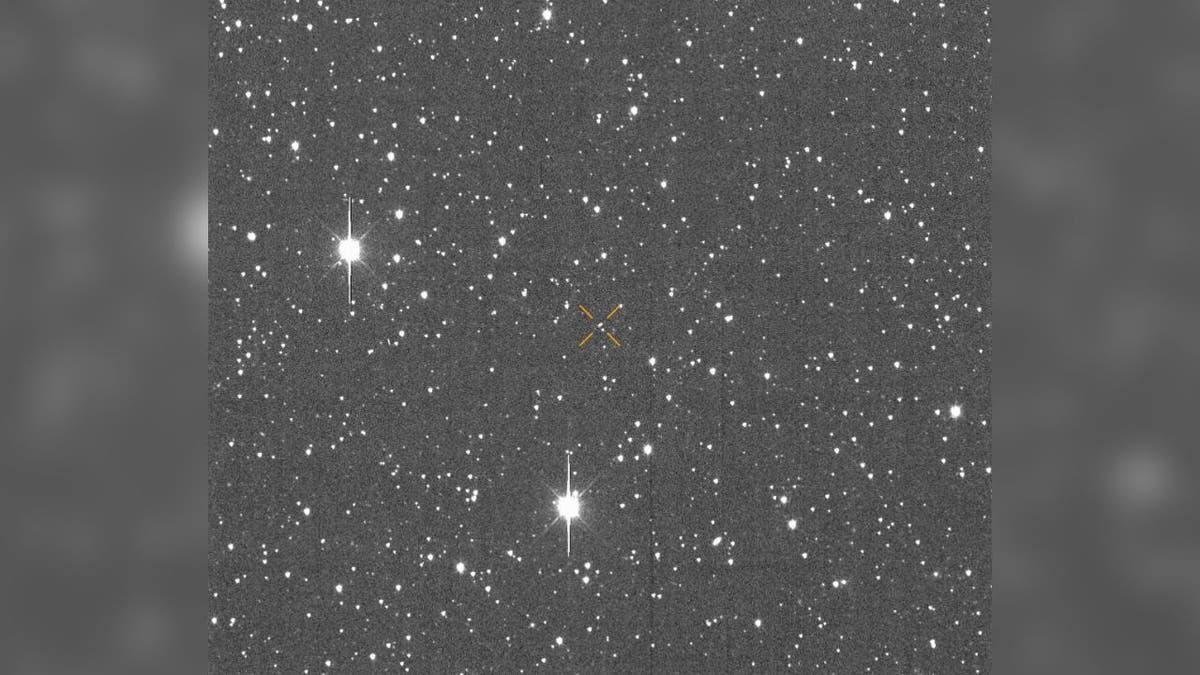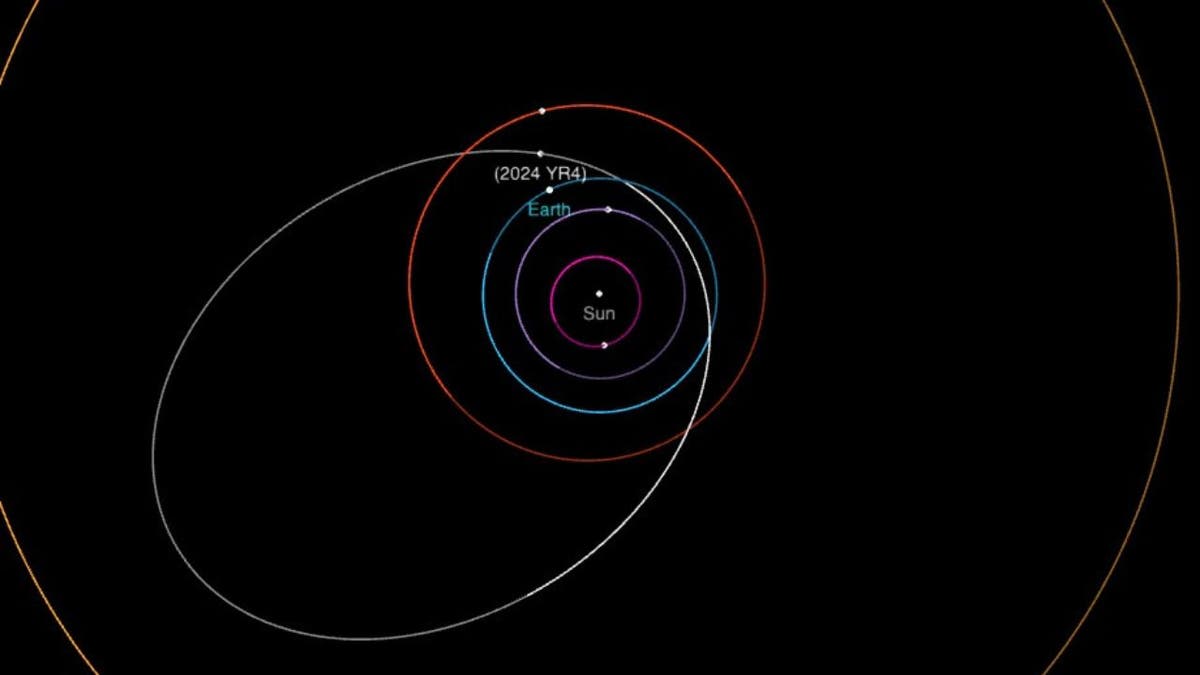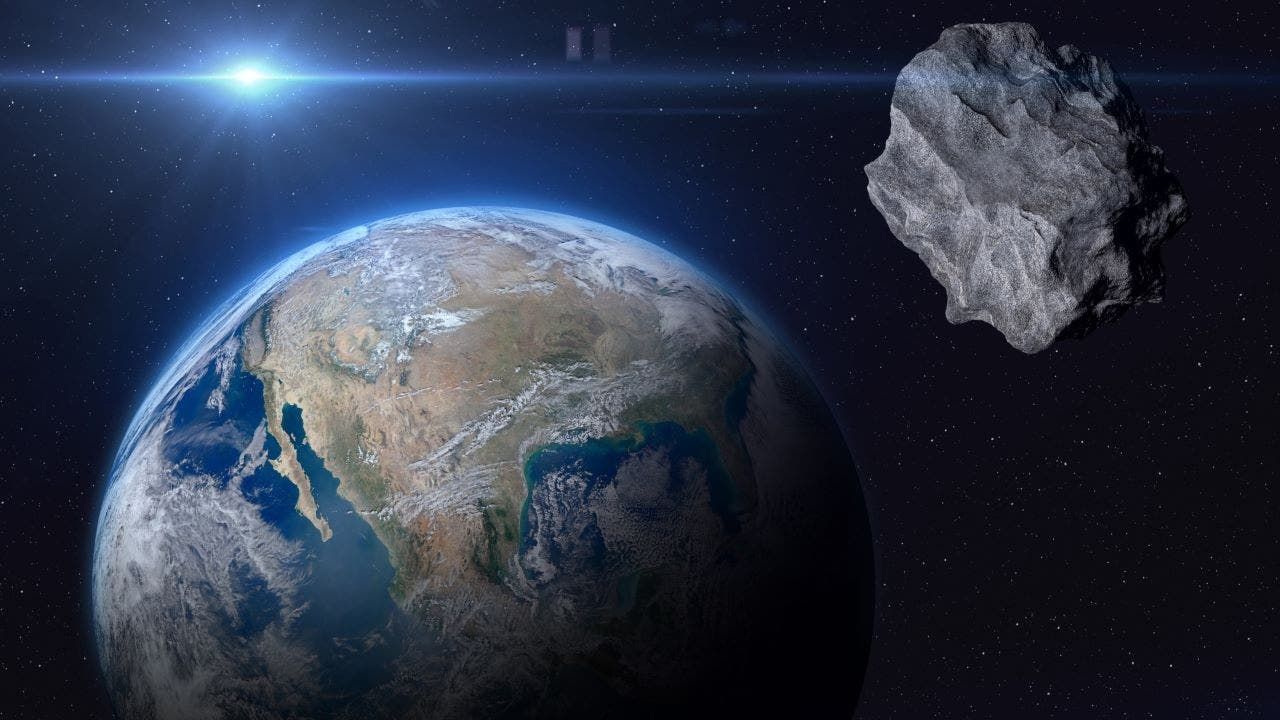According to NASA, the possibilities of an asteroid as large as the width of an NFL field that hit the earth, according to NASA.
The recently discovered asteroid 2024 years 4 now has an impact probability of 2.6%, or 1 in 38 probabilities. That is greater than a probability of 1.9% and an initial probability of 1% at the end of January. On the other hand, this means that there are more than 97% possibilities for the asteroid to pass the earth.
It is estimated that the heavenly body is between 130 and 300 feet wide and is expected to swing near the earth on December 22, 2032. The width of a NFL field from the lateral line to the lateral line is 160 feet.
According to NASA, the possibilities of an asteroid as large as the width of an NFL field that hit the earth, according to NASA. The recently discovered asteroid 2024 years 4 now has an impact probability of 2.6%, or 1 in 38 probabilities. The image above is an illustration. (Istock)
The asteroid of the stadium size is expected to consider “potentially dangerous” by NASA, it moves “relatively close” to Earth
It is better that the probabilities of a strike will continue to rise and down as the asteroid path around the sun is better understood, and astronomers said there is a good possibility that the risk falls to zero.
NASA and the Webb Space Telescope of the European Space Agency will observe this asteroid near Earth in March before the object disappears from the view. Once that happens, scientists will have to wait until 2028 when our path passes again.
In the improbable case that 2024 years 4 is in an impact trajectory, NASA said that the impact would occur somewhere along a risk corridor that extends through the Eastern Pacific Ocean, northern South America , the Atlantic Ocean, Africa, the Arabic Sea and Asia del Sur. NASA said that if it were to hit the earth, it would affect high speed, approximately 38,000 miles per hour.
The asteroid has been given a level 3 of 10 on the Torino impact danger scale, a system used to measure the potential hazards proposed by objects close to the Earth.

This image made available to the asteroid impact alert system of the University of Hawaii, shows the asteroid 2024 years 4 on December 27, 2024. (ATLAS / HAWAI / NASA University through AP)
The asteroid of the stadium size is expected to consider “potentially dangerous” by NASA, it moves “relatively close” to Earth
At level 3, the scale suggests: “A close encounter, which deserves attention from astronomers. Current calculations provide a 1% or greater collision possibility capable of localized destruction. Most likely, new telescopic observations They will lead to reallocation at level 0. Attention from the public and public officials deserves whether the meeting is less than a decade. “
The alert level is the second highest registered since 2004 when the Apophis of the asteroids reached level 4, but the additional observations then determined that its trajectory would make the earth pass at a safe distance of around 20,000 miles in 2029.
However, experts say it is too early to worry about this asteroid.

Orbit of 2024 years 4 with positions as of January 31, 2025. (POT)
Click here to get the Fox News application
“Nobody should worry that the probability of impact is increasing. This is the behavior that our team expected,” said Paul Chodas, director of the Center for Studies of nearby objects of the land of NASA, to The Associated Press. “To be clear, we expect the probability of impact of falling to zero at some point.”
Asteroid 2024 years 4 was reported for the first time to the Minor Planet Center, an international compensation house for positional measurements of the small body, for the land impact alert system of the asteroid financed by NASA (Atlas) in Chile on December 27 . Atlas includes several telescopes around the telescopes around the telescopes around the world and is administered by the Hawaii University Institute of Astronomy.
Fox Weather and Associated Press contributed to this report.












